For the first time since it was founded in 2017, The Venice Glass Week, an annual international festival dedicated to the promotion and celebration of the art of glass taking place in Venice, collaborated with Vision Milan Glass Week in the creation of a brand-new festival: The Italian Glass Weeks.
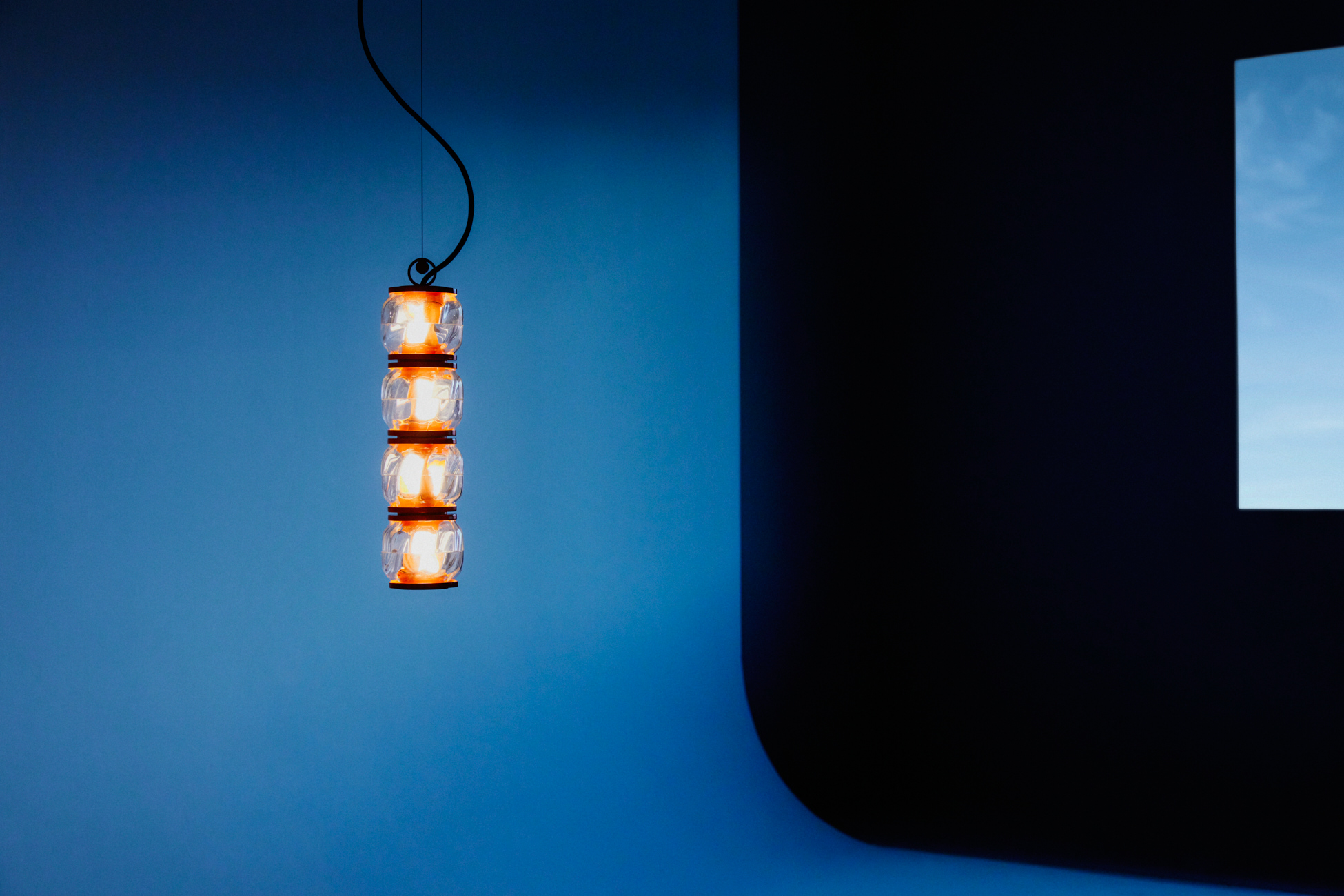
Unlike the previous editions, this year, two different events aimed at promoting contemporary glass productions were therefore proposed: the first week of the festival took place in Milan from the 10th to the 18th of September, and was dedicated mainly to industrial glass, while the second, dedicated to artistic glass, took place in Venice from the 17th to the 25th of September.
The collaboration successfully shed light on the contemporary landscape of glass production, enabling the participation of over 300 initiatives.
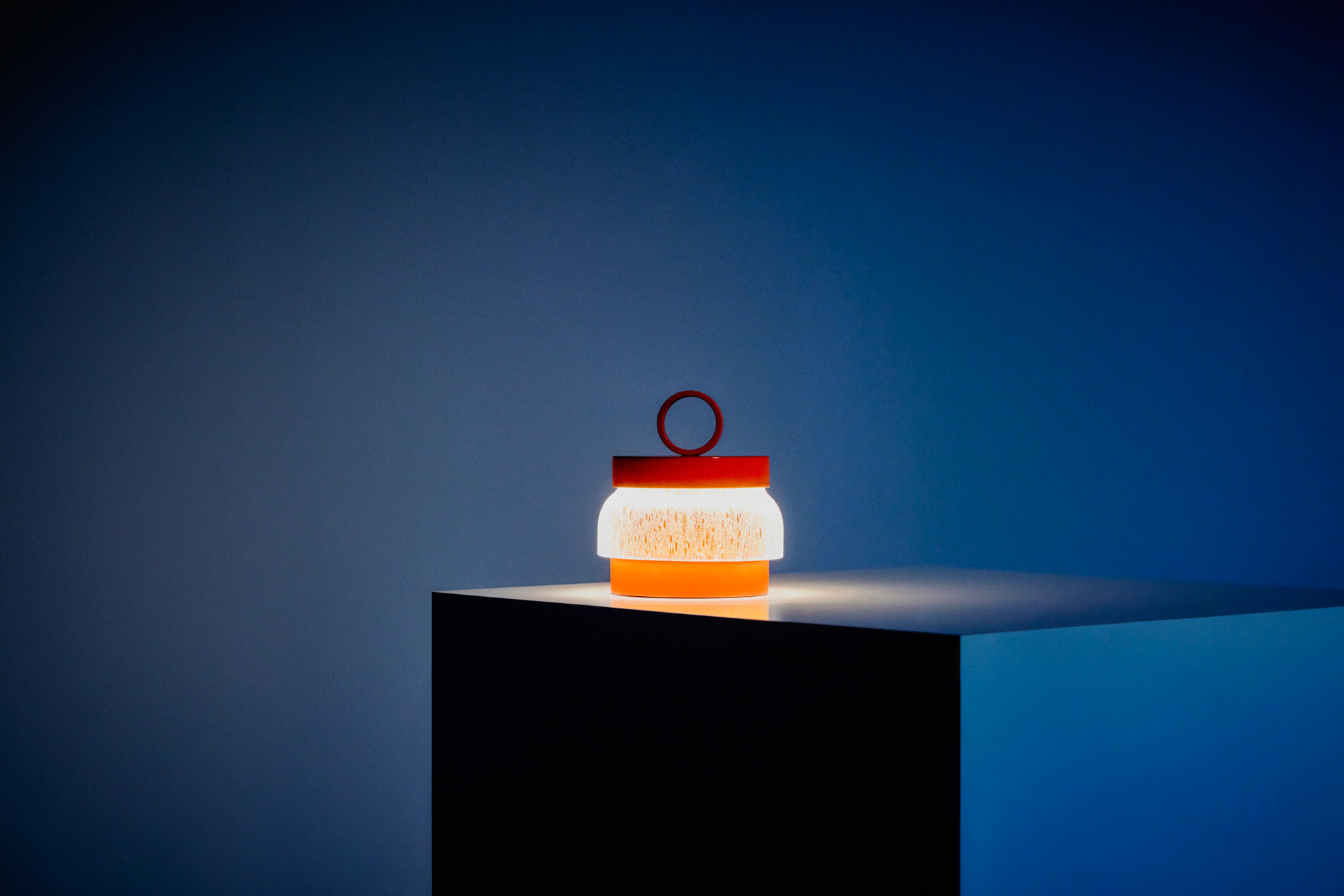
Unlike the previous editions, this year, two different events aimed at promoting contemporary glass productions were therefore proposed: the first week of the festival took place in Milan from the 10th to the 18th of September, and was dedicated mainly to industrial glass, while the second, dedicated to artistic glass, took place in Venice from the 17th to the 25th of September. The collaboration successfully shed light on the contemporary landscape of glass production, enabling the participation of over 300 initiatives.
With this short article we would like to guide you in an itinerary of the four exhibitions we appreciated the most from the Venice week, which took place on the main island and on neighboring ones, among which the island of glass by definition, Murano.
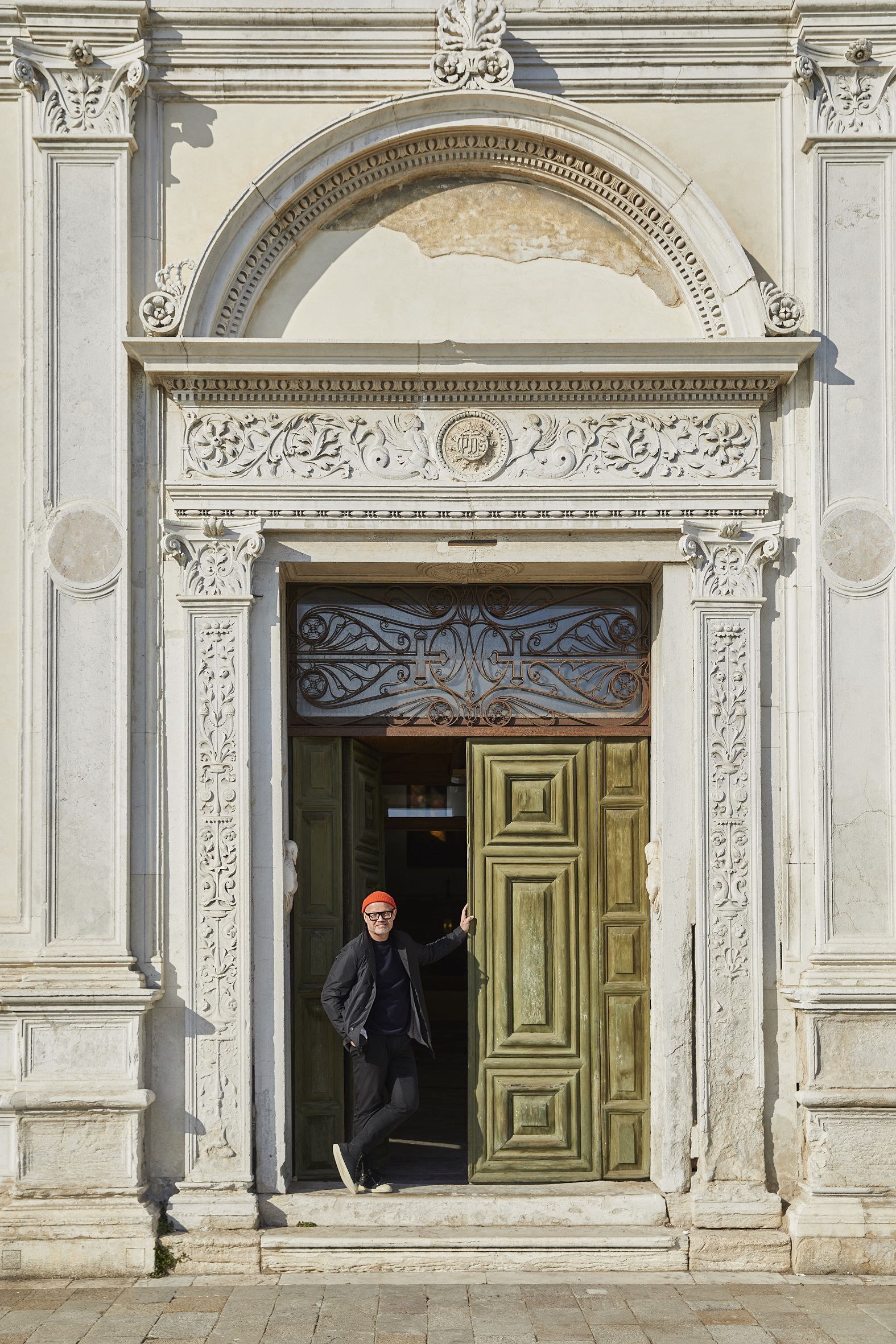
Strolling on Fondamenta Zattere, a long walkway overlooking the Giudecca Canal, you will come across the Church of Santa Maria della Visitazione, the earliest example of a Renaissance church in Venice. The religious building was chosen by Rony Plesl, a Czech artist and designer, as the exhibition space to host his newest project, Trees grow from the sky, presented as a collateral event of the 59th International Art exhibition of La Biennale di Venezia and still open till November 26th.
The exhibition consists of a site-specific installation representing an imaginary landscape, composed of large crystal tree trunks standing in the middle of the nave.
What is of great interest is the technique used in the creation of the pieces: the installation is the world premiere of Vitrum Vivum, a unique technology which consists in casting glass as if it were bronze, which allows the production of glass sculptures without limitations, also enabling the making of very large objects. Moreover, the use of Uranium glass in one of the pieces, which reacts to ultraviolet radiations, makes the sculpture glow in dark spaces.
Above and below: installation pictures of the exhibition Trees Grow from the Sky by Rony Plesl.

The evocative environment of the church perfectly communicates with the artworks, conferring them a sense of sacrality and creating a spiritual experience that encourages the exploration of the real essence of things.
Walking out of the church, on the other side of the Giudecca Canal, it’s possible to spot San Giorgio Island, which is very easy to reach by boat from Fondamenta Zattere. San Giorgio Island is famous for hosting Le Stanze del Vetro, an exhibition space which organizes exhibitions and cultural initiatives aimed at enhancing the glass production and design of the 20th and 21st century. It is exactly at Le Stanze del Vetro that the second exhibition we want to present takes place till January 8th 2023, titled Venini: Light 1921-1985.
The exhibition describes the activity of the Venini glass furnace in the field of lighting, displaying some of the most representative examples of their work.
The Venini enterprise has always paid special attention to this particular field and came up with constantly evolving solutions, such as the definition of new types of glass (pulegoso, a canne, opaline etc.) and the use of modular systems.


Eighty-one objects are showcased, created both for domestic and public use, ranging from ministerial buildings and post offices to theaters and hotels.

It’s worth to mention that the exhibition also includes two large installations: the first reproduces the great chandelier designed by Carlo Scarpa for the Veneto pavilion at the Italia 61 exposition in Turin in 1961, and the second reproduces, on a smaller scale, the Velarium created for Palazzo Grassi in 1951.
Reproductions of the chandelier designed for the Veneto pavilion at the Italia 61 exposition in Turin in 1961 by Carlo Scarpa, and of the Velarium created for Palazzo Grassi in 1951.
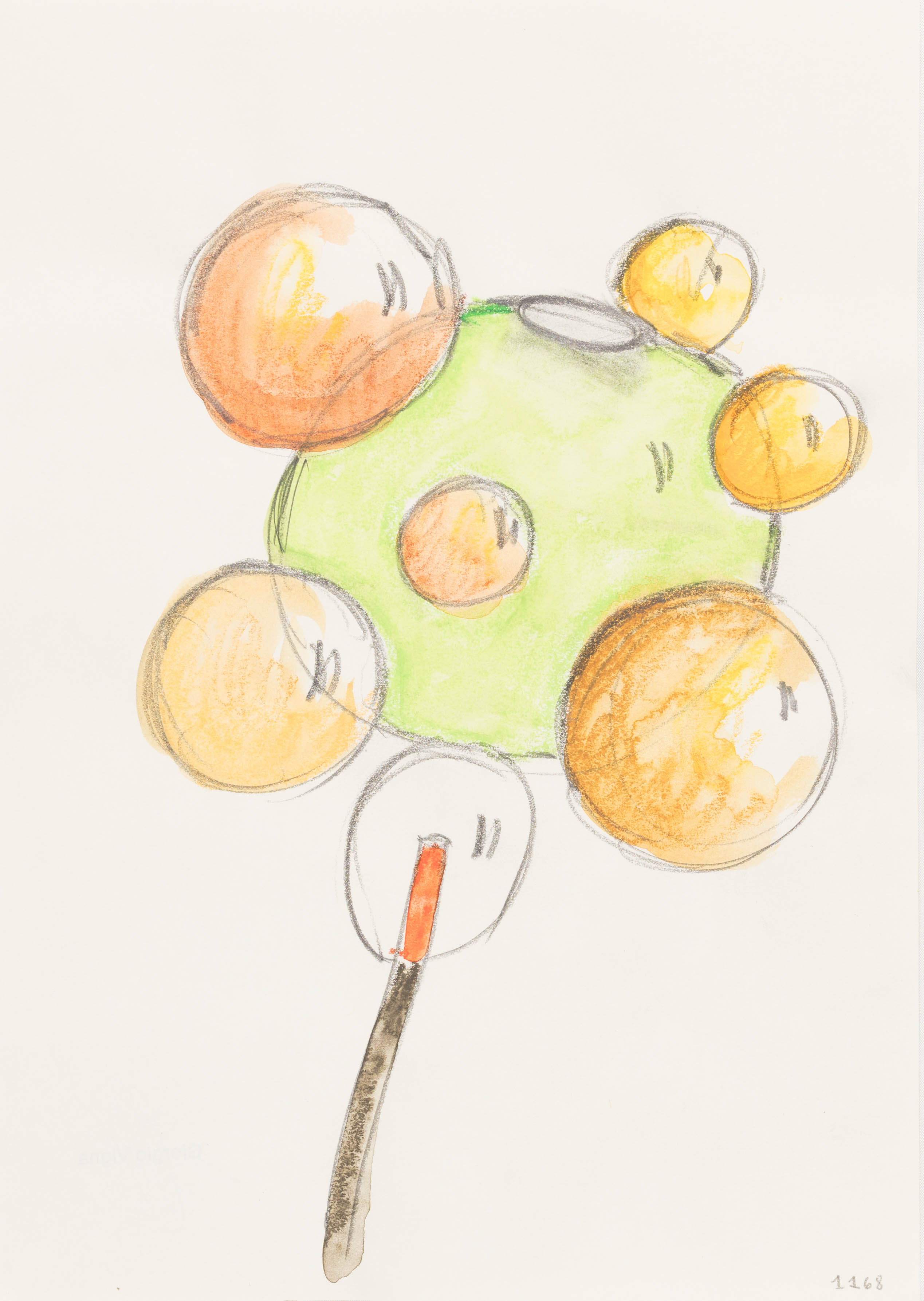
Staying in San Giorgio, another small exhibition caught our attention: Editi-Inediti: disegnare ‘in vetro’, located at Fondazione Giorgio Cini inside the library. Organized by the Center for Glass Studies of the foundation, the aim of the exhibition is to recount the work of Cristiano Bianchin, Silvano Rubino e Giorgio Vigna, three artists chose glass as one of their main medium of expression.
< Giorgio Vigna, Fiore; pencil and watercolor pastel on paper, 2016-2019. Courtesy Fondazione Giorgio Cini.
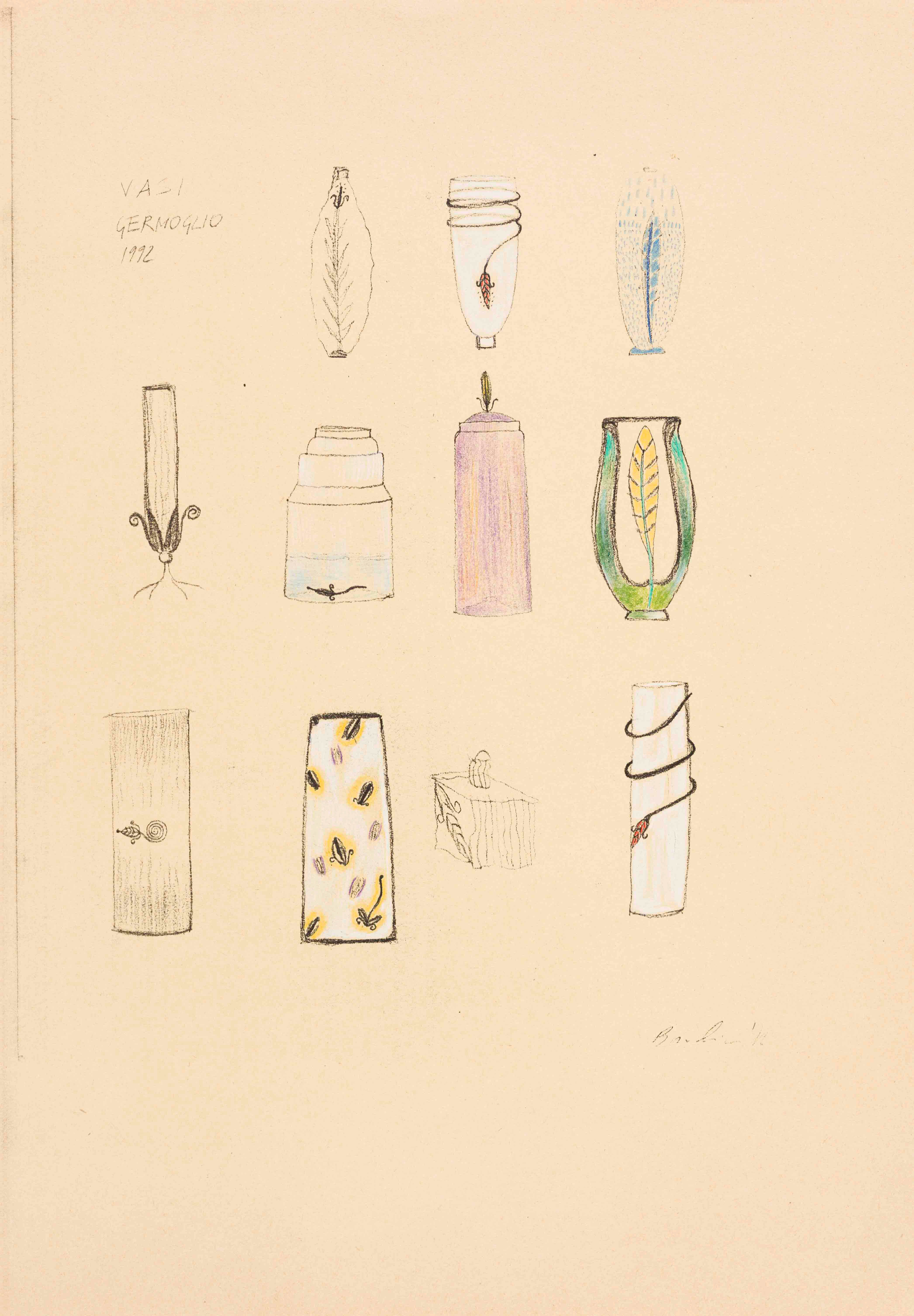
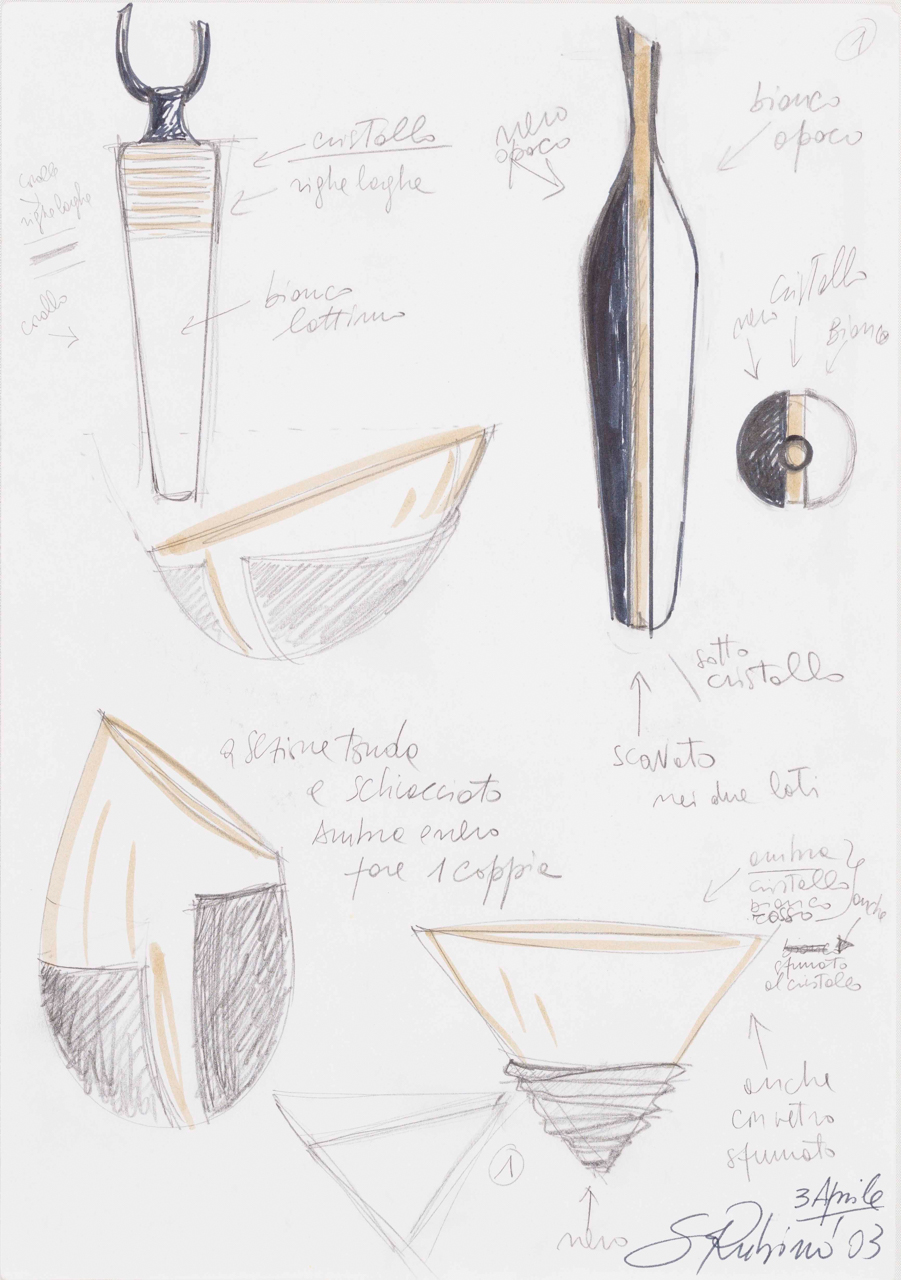
The exhibition showcases projects, sketches and drawings which were never published, and were donated by the three artists to the foundation. The works, comprising watercolors, charcoals, pastels and working materials, testify the creative processes of these three different personalities, highlighting their differences and peculiarities in the approach to glass creations.
The last stop of our itinerary is, finally, in Murano, which hosted a very special initiative, called Materia Seconda.
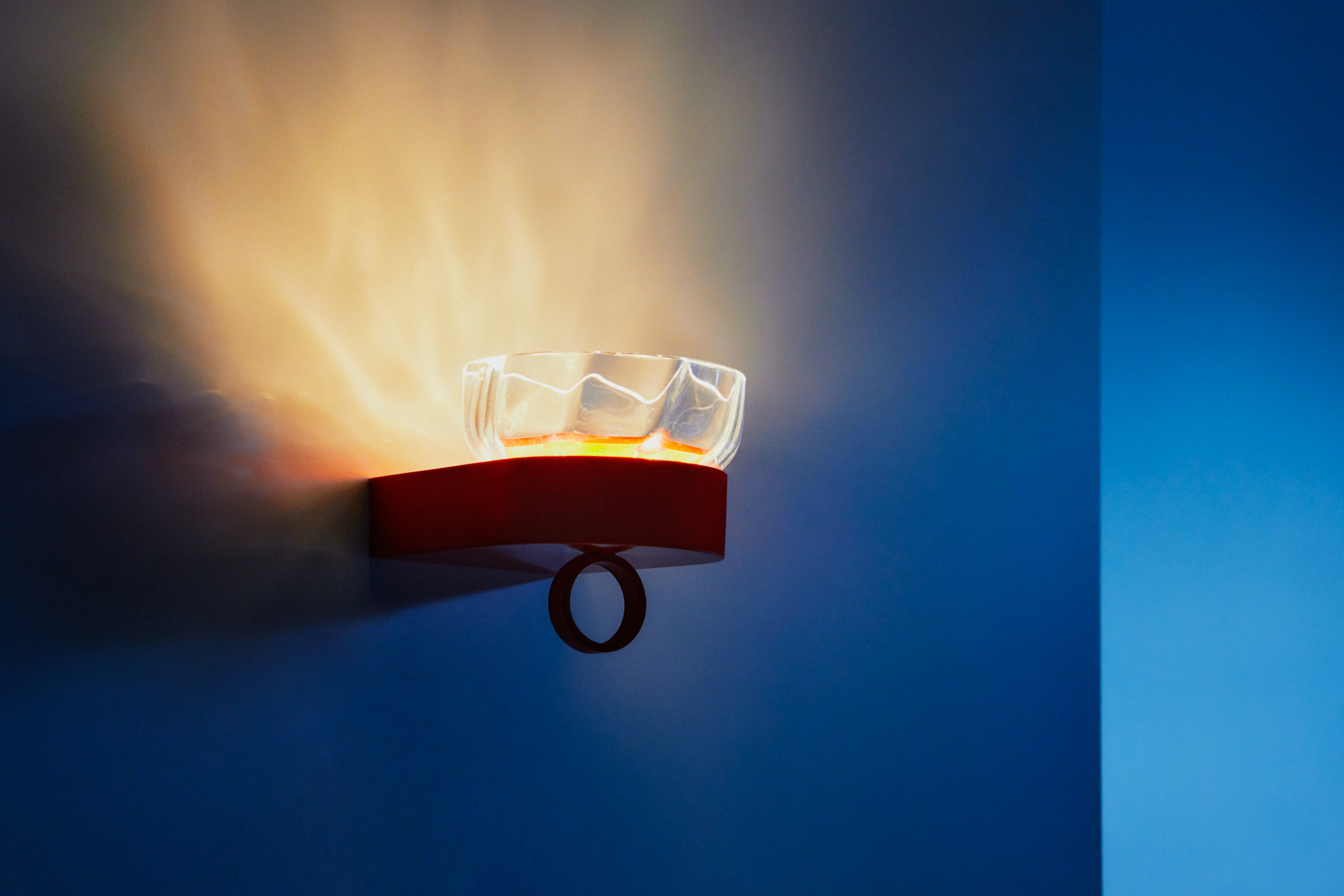
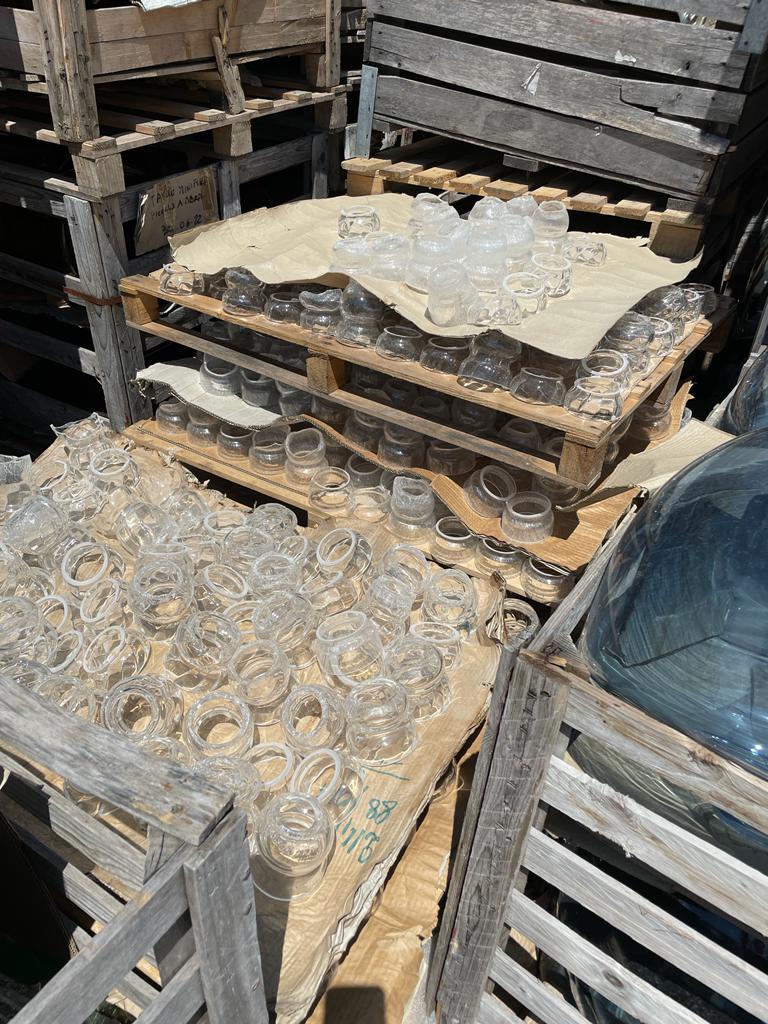
The project was born from the collaboration between BTM Officina, a company based in Murano that provides consulting services in the glass industry and develops glass products of all types, and the Fucina Frammenti design collective, following a reflection on the current situation of scarcity of energy resources and lack of raw materials, which is having a particular impact on Murano commercial activities. In the attempt to come up with new solutions, and to make proactive steps towards an optimization of the production processes in the context of glass production, a collection of illuminating objects was created, named “Parigi 142”.
The main idea behind these creations is the recovery and valorization of the ‘noble’ waste resulting from industrial processes, by finding new applications and uses for it. It is indeed for this reason that the objects are created with glass parts that would otherwise have been dismissed, conferring them a new life and purpose.
Glass still has a lot to say thanks to the creativity of the many artists and designers who continue to choose it as a special means of expression. The projects we talked about above seemed to us a strong message of hope for the future of Murano glass, which is going through a complex historical moment.
Although the Italian Glass Weeks are over, you still have time to visit most of the participating exhibitions by visiting the official Italian glass weeks website and enjoy the infite possibilities of glass.










